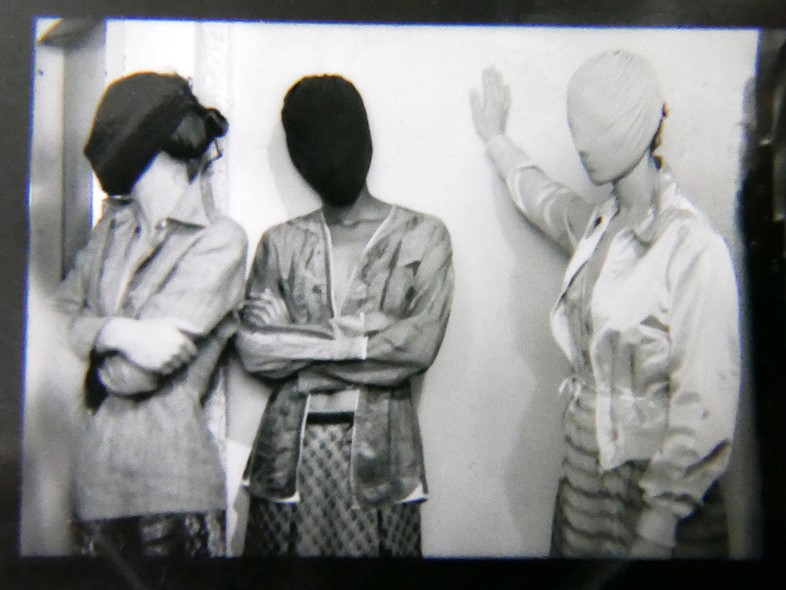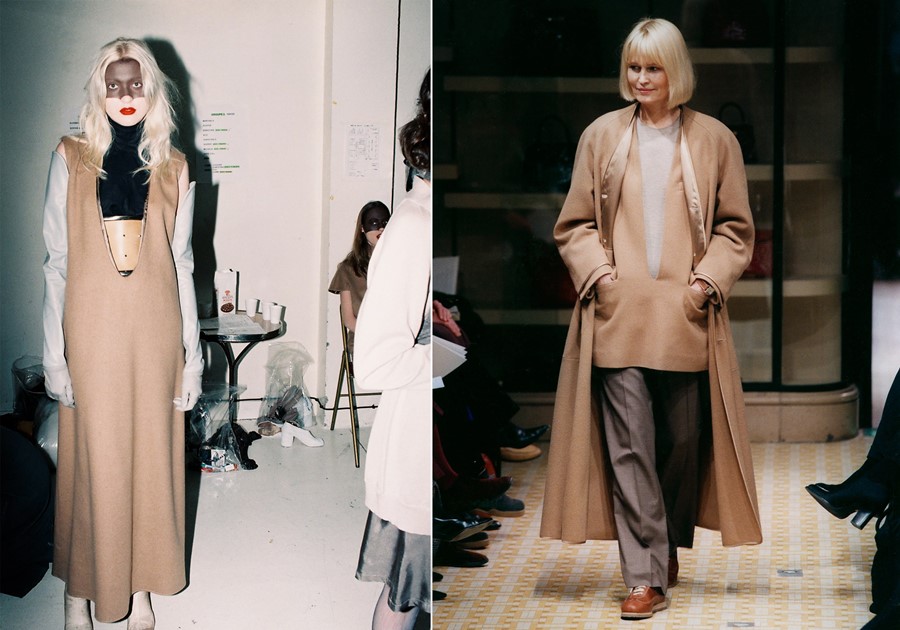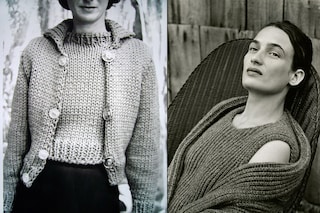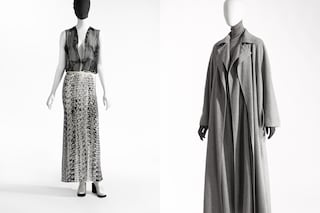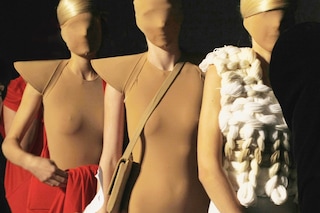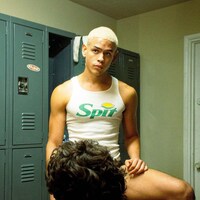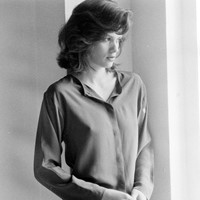The Belgian designer steered the French house from 1997 until 2003 – the curator of a new exhibition discusses his brilliant, misunderstood legacy there
In April 1997, Belgian designer Martin Margiela was announced as the new creative director of France’s historic luxury fashion house Hermès. Since 1988, the designer had been making a name for himself as a pioneer of deconstruction, presenting clothes that were supposed to be worn back to front, or shoes that had split toes or came taped to feet. Having never given a formal interview, the near-anonymous Margiela was the antithesis of the celebrity designers of the day, making his appointment a truly intriguing choice for the press: how would Margiela deconstruct the classics of Hermès – its famous hue of orange, the Kelly bag, and patterned carré silk scarves? “They were having fantasies of Martin cutting the Kelly in two,” explains Kaat Debo, Director at Antwerp’s MoMu fashion museum and curator of the new Margiela: The Hermès Years exhibition, which opens this week.
What Margiela actually debuted for AW98 was remarkably tame in comparison. Instead of avant-garde concepts, the focus was on quality, inspired by 1920s sports and leisure clothing, and over the course of his tenure, the designer pioneered a timeless wardrobe; clothes that wouldn’t be dated by patterns or bright colours. The press, frankly, didn’t really get it: even with a booklet to explain the innovations of each item, they expected garments that looked spectacular to the person looking up at the runway rather than felt incredible to the model wearing them. The brilliance of Margiela’s work for Hermès was a quiet one, imbued with an incredible respect for women and a desire for them to feel happy, comfortable, and unrestricted in their clothes. In the years since 2003, it’s faded into fashion history somewhat – now Debo is telling its story, demonstrating how, although less outwardly radical than the designs of Margiela’s own maison, it contained the same spirit which makes him so beloved.
Where did the idea for the exhibition first come from?
Kaat Debo: Well, for a number of seasons I noticed that Martin’s name and heritage were very much alive in the press and in the collections of different designers, which I found remarkable as he quit his house almost a decade ago. I wondered, ‘Why now?’ I feel that in a time where a lot is changing within the fashion industry, when the fashion system is very much under pressure and designers and brands are looking for a new business model, Martin’s work becomes very relevant again. It’s so rich in ideas and concepts that if you are looking for an alternative, you somehow always end up with Martin Margiela.
And why focus on his time at Hermès?
Kaat Debo: I was in contact with Martin and we ended up talking about his work for Hermès. I said that I felt it a little bit of a pity that you didn’t find a lot of it online – this was (the) pre-digital era, before the big boom of social media – and we didn’t have his Hermès work in the collections at the museum. That’s how we ended up doing an exhibition, and I think he was immediately very enthusiastic about the idea because he had very good memories about his work for Hermès. I think he also realised that somehow there was this danger of it getting lost in fashion history, that nobody would pick it up and really show it. There is a generation of journalists who saw the shows, but I think younger people are just not aware of the collections.
Why do you think those journalists perhaps didn’t quite grasp what Margiela was doing?
Kaat Debo: Martin explained to me that he felt that a fashion show would not do right to his collections – they were made for the women wearing them, and not for the person looking; it’s not spectacular from the outside. He felt that showing these collections during fashion week at the end of the 1990s when a journalist had seen these spectacular shows – John Galliano for Dior, McQueen – and then would see his collection at Hermès, it would be difficult to communicate the essence of the collections. When I talk to these journalists and I explain the concept and the innovations in materials and techniques, they say, ‘We never realised that it was so rich in ideas!’. I think that’s also one of the reasons why we have the exhibition. It was not just making discreet, beautiful, luxurious garments, but there really was a vision and a concept that was very much in line with his vision for Maison Martin Margiela.
“His work was never anti-fashion, never. It’s not negative at all. You could compare it to punk but it doesn’t have the negativity – it shocks and questions standards, questions a system” – Kaat Debo
In the exhibition catalogue, Olivier Zahm says how Margiela’s vision could’ve translated to almost any brand. He could’ve done Ralph Lauren and it’d still be Margiela. I thought that was a really brilliant way to put it.
Kaat Debo: Yeah, absolutely. From the outside, they are two very different worlds, but we tried with the exhibition to show that it’s two different translations of the same vision. He designed a vision for Hermès very well aware of the boundaries. He knew he was designing luxury fashion for a bourgeois woman, he knew it was going to be very expensive. I think he could’ve designed for other brands and still stayed honest to his vision and passion. I think a lot of his passions come back at Hermès – his love for tailoring, his love for the male western wardrobe – the archetypal male western wardrobe, like the trench coat, the blouson, the white shirt. He keeps on invented translations of these archetypal garments, both for Maison Martin Margiela as well as for Hermès.
So it wasn’t about creating something boldly new for the house, but exploring things he was interested in.
Kaat Debo: With Hermès it wasn’t about a revolution, but evolution and I think the hardest thing for creative directors is when they take over an existing brand or house – to make sure you evolve it, that it becomes relevant today in 2017. I think it’s only within fashion that you take over a name, and every five years, three years, you welcome a new creative director that has to translate the work of the founder, who might even be dead. You don’t have that in art! It’s quite a crazy idea if you think of it.
Do you think that it was a success, his period there?
Kaat Debo: In part, yes. I think it was a success with customers. I don’t have the sales numbers, but I’m quite sure it sold well and that they for sure reached a new audience – a fashion audience. But I think (the) press was really critical. They were getting frustrated, more and more frustrated each season, saying he has so many great ideas for Maison Martin Margiela, why does he refuse to come up with ideas, each season it’s all the same.
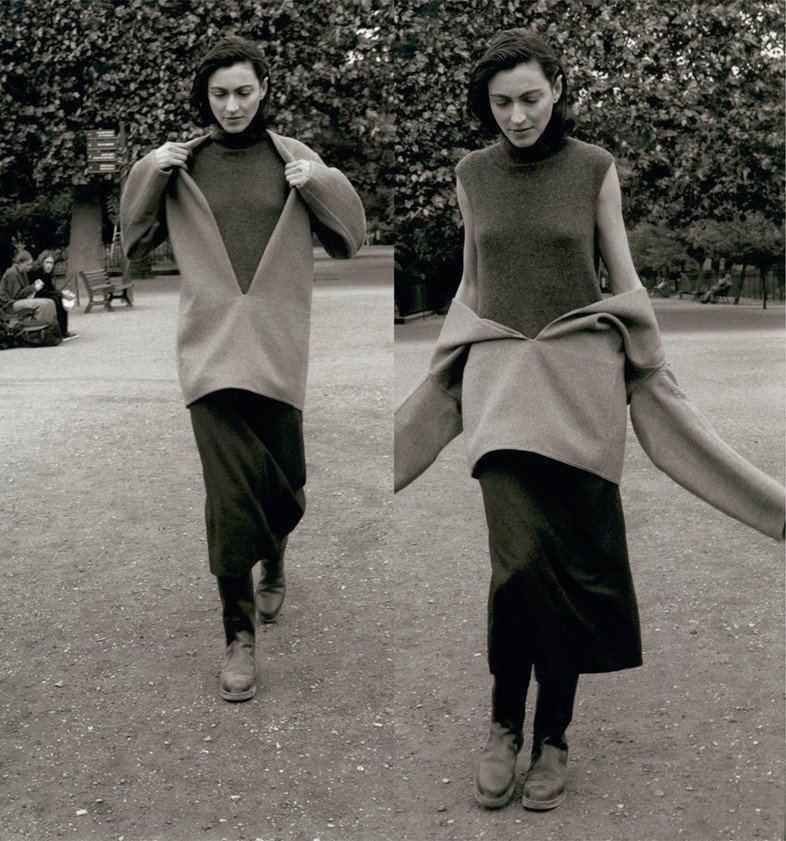
I think it’s a limitation of the fashion system that we’re so used to expecting things at six months intervals or even sooner, that the idea of something being timeless rather than seasonal is too much.
Kaat Debo: That’s also why I think that Margiela is really one of the forerunners of slow fashion – even before the concept existed. The Maison was about allowing time, using the colour white which shows the passage of time, reworking vintage and secondhand clothing and showing the production process on the outside of a garment – there were a number of different strategies to really resist this obsession of fashion with constant innovation and eternal youth. He did that at Hermès, not by using second-hand materials, but by developing this slowly evolving wardrobe. A lot of the garments can be worn in two, three or even four different ways, so you would less easily get bored. They are all strategies to reach the same goal – at the Maison the strategies were much more experimental, avant-garde, risque – the Margiela woman was also a different kind of woman, who dares to wear these ideas. Whereas the Hermès woman appreciates the comfort and quality.
Would you call Margiela a feminist designer?
Kaat Debo: It was not in his intention, but for sure there’s a feminist part to his work. I think the basis of all of his work for Hermès is just an incredible respect for women. He was designing for women of different ages, so he didn’t want to show his collections on girls 16, 17, 18 years old. He really wanted to have natural, mature women from 25 up to 65 which is even now today still very rare for designers to do. He also wanted his models to feel comfortable in the garments – if you didn’t like the look, you didn’t have to wear it. He invited professional massagers to give a massage backstage, models received a glass of champagne, and he gave them a compliment before they went on the catwalk to make sure they really communicated the comfort of the clothing they felt.
“I think the basis of all of his work for Hermès is just an incredible respect for women” – Kaat Debo
I think Martin is really someone who observes women really well, who asks a lot of questions. He said that his team at Hermès were almost entirely women, that through the very first season were wearing his collections, so from the start made sense that they were also his most critical audience. He really thought it was important to get their feedback. I think it’s so beautiful how he talks about women and also observes how women move in garments, how they behave. The idea of the deep v-neck, that you can slide the arms down and knot it around your waist so you don’t have to pull the jacket over your head and mess up your hair. It’s just small details that are very important often in the daily life of a woman and I think a lot of designers design with an ideal body and an ideal woman in mind. He doesn’t do that. Of course, he has a type of woman in his mind, but it’s more about that character. How they live and not just about their body.
Zahm also talked about how he wasn’t anti-fashion as people like to claim, he was actually the perfect answer to the times. What do you think about that?
Kaat Debo: Absolutely! His work was never anti-fashion, never. It’s not negative at all. You could compare it to punk but it doesn’t have the negativity – it shocks and questions standards, questions a system. At Maison Martin Margiela it was often in a way that shocked a big part of the audience or big part of the press – some shows at the Maison we think of as iconic, at the time some press were super angry because they didn’t get a seat and had to stand, or they had to travel to the outskirts of Paris. It was chaos, so really it was quite tough after the reactions they got. I think also commercially it was not always easy at the Maison because they really chose creative freedom, a hundred percent. He really had a love for tailoring and a passion for the garment and those are part of the reasons why he chose to stay anonymous. I think in an era where all the attention went to the designer and celebrities – he didn’t want anything to distract from the creative process and the garment and the teamwork behind a creation. But that was not an anti-statement, it was pro-fashion and pro-creativity.
Margiela: The Hermès Years is open from 31 March at MoMu, Antwerp
